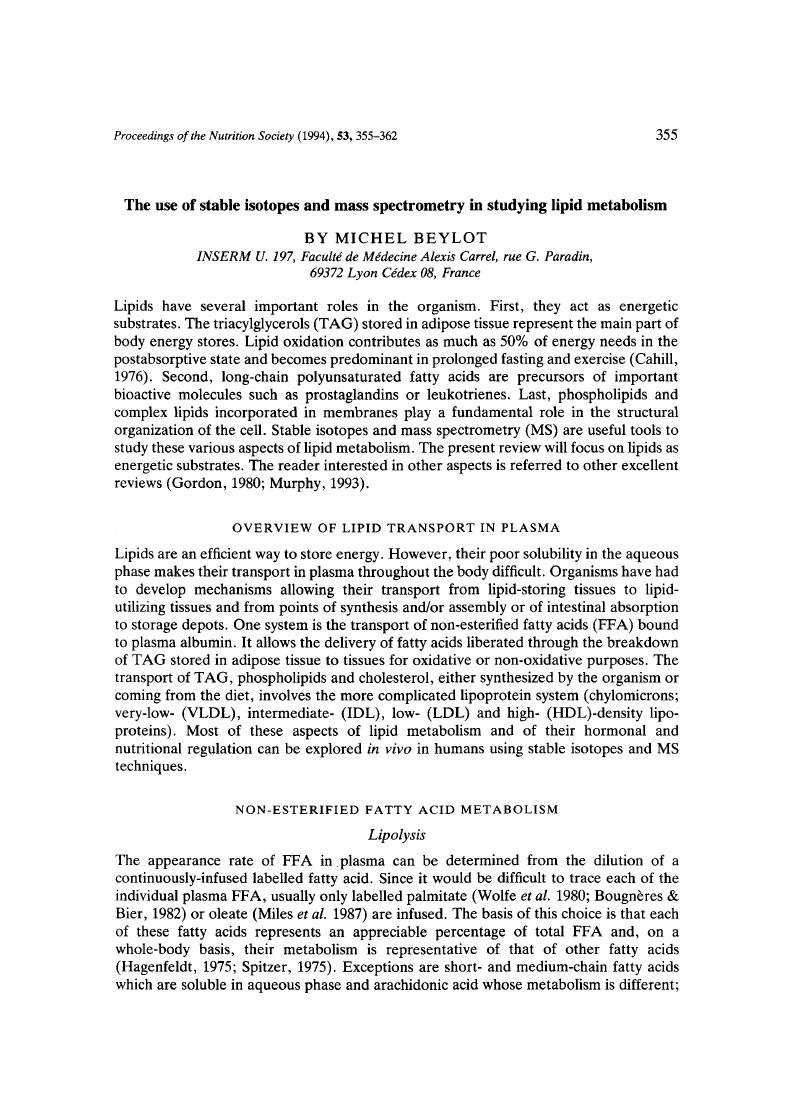Crossref Citations
This article has been cited by the following publications. This list is generated based on data provided by Crossref.
Rhee, SK
Kayani, AJ
Ciszek, A
and
Brenna, JT
1997.
Desaturation and interconversion of dietary stearic and palmitic acids in human plasma and lipoproteins.
The American Journal of Clinical Nutrition,
Vol. 65,
Issue. 2,
p.
451.
Pond, Caroline M.
and
Gilmour, Iain
1997.
Stable isotopes in adipose tissue fatty acids as indicators of diet in arctic foxes (Alopex lagopus).
Proceedings of the Nutrition Society,
Vol. 56,
Issue. 3,
p.
1067.
Lorenz, D.
Grössle, R.
Ghoos, Y.
Günther, H.
Richter, A.
and
Rumstadt, B.
1998.
Pouch.
p.
485.
Young, Vernon R.
and
Ajami, Alfred
1999.
Isotopes in nutrition research.
Proceedings of the Nutrition Society,
Vol. 58,
Issue. 1,
p.
15.
Faraj, May
Jones, Peter
Sniderman, Allan D.
and
Cianflone, Katherine
2001.
Enhanced dietary fat clearance in postobese women.
Journal of Lipid Research,
Vol. 42,
Issue. 4,
p.
571.
Kussmann, Martin
Affolter, Michael
Nagy, Kornél
Holst, Birgit
and
Fay, Laurent B.
2007.
Mass spectrometry in nutrition: Understanding dietary health effects at the molecular level.
Mass Spectrometry Reviews,
Vol. 26,
Issue. 6,
p.
727.
Delarue, Jacques
and
Beylot, Michel
2007.
Les traceurs isotopiques stables en nutrition humaine : que peut-on faire avec ?.
Cahiers de Nutrition et de Diététique,
Vol. 42,
Issue. 6,
p.
324.
Byrdwell, William C.
2020.
Bailey's Industrial Oil and Fat Products.
p.
1.



